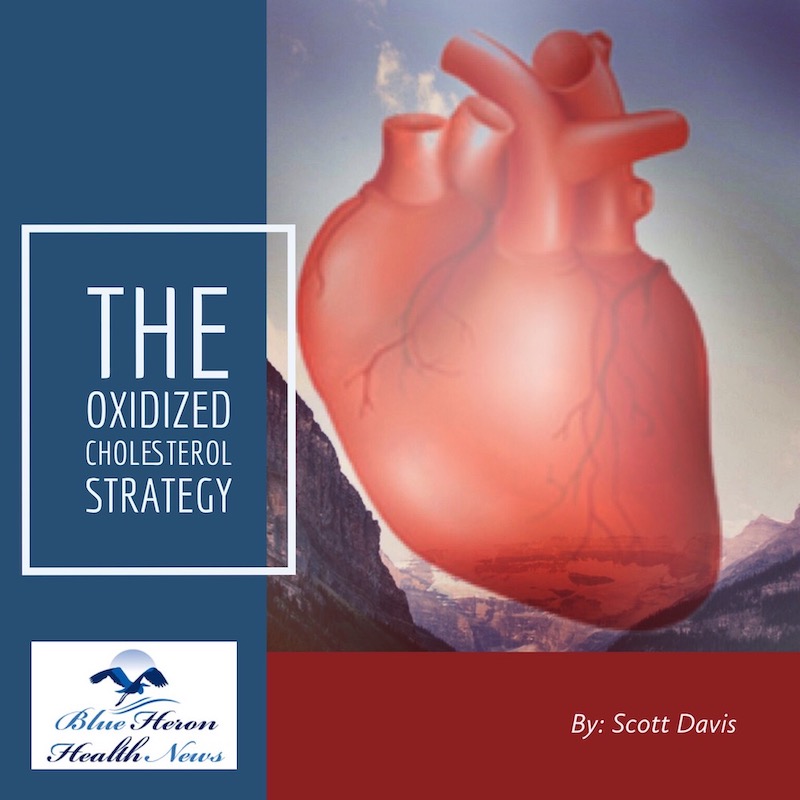
The Oxidized Cholesterol Strategy™ By Scott Davis The Oxidized Cholesterol Strategy is a well-researched program that reveals little known secret on how to tackle cholesterol plaque. This program will tell you step by step instructions on what you need to completely clean plaque buildup in your arteries so as to drop your cholesterol to healthy level.
How does obesity influence cholesterol oxidation?
Obesity is a major risk factor that influences cholesterol oxidation, which in turn contributes to the development and progression of cardiovascular diseases. Here’s a detailed explanation of how obesity affects cholesterol oxidation:
1. Increased Oxidative Stress
Enhanced Production of Reactive Oxygen Species (ROS)
- Adipose Tissue: In obesity, enlarged adipose tissue becomes a significant source of ROS. Excess fat cells, particularly visceral fat, generate higher levels of ROS through various mechanisms, including mitochondrial dysfunction and increased activity of enzymes like NADPH oxidase.
- Chronic Inflammation: Obesity is associated with a state of chronic low-grade inflammation, which further promotes oxidative stress. Inflammatory cells in adipose tissue release ROS as part of the inflammatory response.
Depletion of Antioxidants
- Reduced Antioxidant Defense: The increased oxidative stress in obesity can deplete the body’s antioxidant defenses, such as glutathione, superoxide dismutase (SOD), and catalase, making LDL cholesterol more susceptible to oxidation.
2. Dyslipidemia
Altered Lipid Profiles
- Elevated LDL Cholesterol: Obesity often leads to dyslipidemia, characterized by elevated levels of low-density lipoprotein (LDL) cholesterol, which provides more substrate for oxidation.
- Increased Triglycerides: Higher triglyceride levels, common in obese individuals, can promote the formation of small, dense LDL particles. These particles are more prone to oxidation than larger, more buoyant LDL particles.
- Reduced HDL Cholesterol: Obesity is associated with lower levels of high-density lipoprotein (HDL) cholesterol, which impairs reverse cholesterol transport and reduces the antioxidant protection normally provided by HDL.
3. Inflammation and Immune Activation
Adipose Tissue Inflammation
- Pro-Inflammatory Cytokines: Adipose tissue in obese individuals secretes higher levels of pro-inflammatory cytokines, such as TNF-α, IL-6, and MCP-1. These cytokines not only promote inflammation but also enhance the oxidative modification of LDL cholesterol.
- Immune Cell Infiltration: Obesity increases the infiltration of immune cells, such as macrophages, into adipose tissue. These cells release ROS and contribute to the oxidative environment.
4. Endothelial Dysfunction
Impaired Vascular Function
- Reduced Nitric Oxide (NO) Bioavailability: Obesity is associated with endothelial dysfunction, partly due to reduced bioavailability of nitric oxide (NO), a molecule that normally protects against oxidative stress.
- Increased Endothelial ROS Production: The endothelium in obese individuals produces more ROS, which can oxidize LDL cholesterol and exacerbate atherosclerosis.
5. Insulin Resistance and Metabolic Syndrome
Role of Insulin Resistance
- Hyperglycemia and Oxidative Stress: Insulin resistance and the resulting hyperglycemia increase oxidative stress. High blood sugar levels can generate ROS through various pathways, such as the polyol pathway and advanced glycation end-products (AGEs) formation.
- Altered Lipid Metabolism: Insulin resistance disrupts normal lipid metabolism, leading to higher circulating levels of free fatty acids and triglycerides, which contribute to oxidative stress and LDL oxidation.
6. Mitochondrial Dysfunction
Impaired Mitochondrial Function
- Increased ROS Production: Obesity is associated with mitochondrial dysfunction, which leads to increased production of ROS. Mitochondria in adipocytes and other cells in obese individuals generate more ROS due to inefficiencies in the electron transport chain.
- Energy Imbalance: Excess nutrient intake and metabolic overload in obesity exacerbate mitochondrial dysfunction and ROS production.
7. Pro-Oxidant Enzymes
Enhanced Activity of Oxidative Enzymes
- NADPH Oxidase: The activity of NADPH oxidase, an enzyme that produces superoxide radicals, is upregulated in obesity, contributing to oxidative stress and LDL oxidation.
- Myeloperoxidase (MPO): Elevated levels of MPO, an enzyme released by activated neutrophils and macrophages, can oxidize LDL cholesterol and contribute to atherogenesis.
8. Impact on Cardiovascular Health
Atherosclerosis Progression
- Foam Cell Formation: Oxidized LDL (OxLDL) is taken up by macrophages in the arterial wall, leading to foam cell formation and the development of atherosclerotic plaques.
- Plaque Instability: OxLDL promotes the secretion of matrix metalloproteinases (MMPs) by macrophages, which degrade the extracellular matrix and weaken the fibrous cap of plaques, increasing the risk of rupture and thrombosis.
Conclusion
Obesity influences cholesterol oxidation through multiple mechanisms, including increased oxidative stress, chronic inflammation, dyslipidemia, endothelial dysfunction, insulin resistance, and mitochondrial dysfunction. These factors collectively contribute to the oxidative modification of LDL cholesterol, promoting the development and progression of atherosclerosis and increasing cardiovascular risk. Managing obesity through lifestyle modifications, such as a healthy diet rich in antioxidants, regular physical activity, and weight loss, is essential for reducing oxidative stress and protecting cardiovascular health.
The Oxidized Cholesterol Strategy™ By Scott Davis The Oxidized Cholesterol Strategy is a well-researched program that reveals little known secret on how to tackle cholesterol plaque. This program will tell you step by step instructions on what you need to completely clean plaque buildup in your arteries so as to drop your cholesterol to healthy level.
